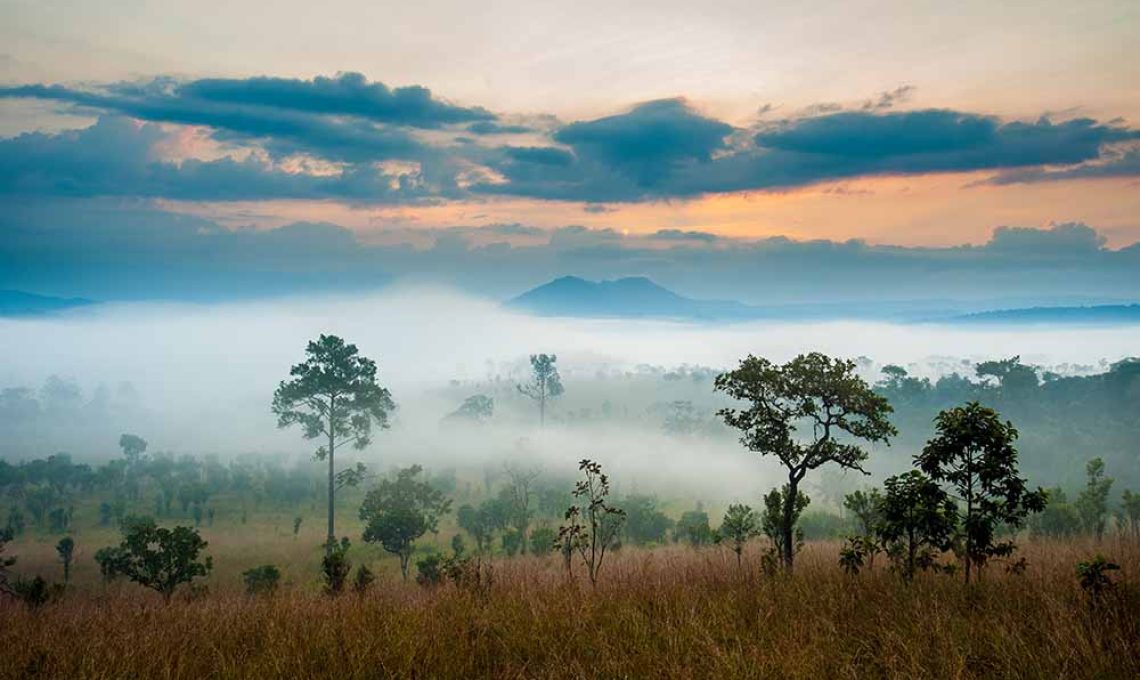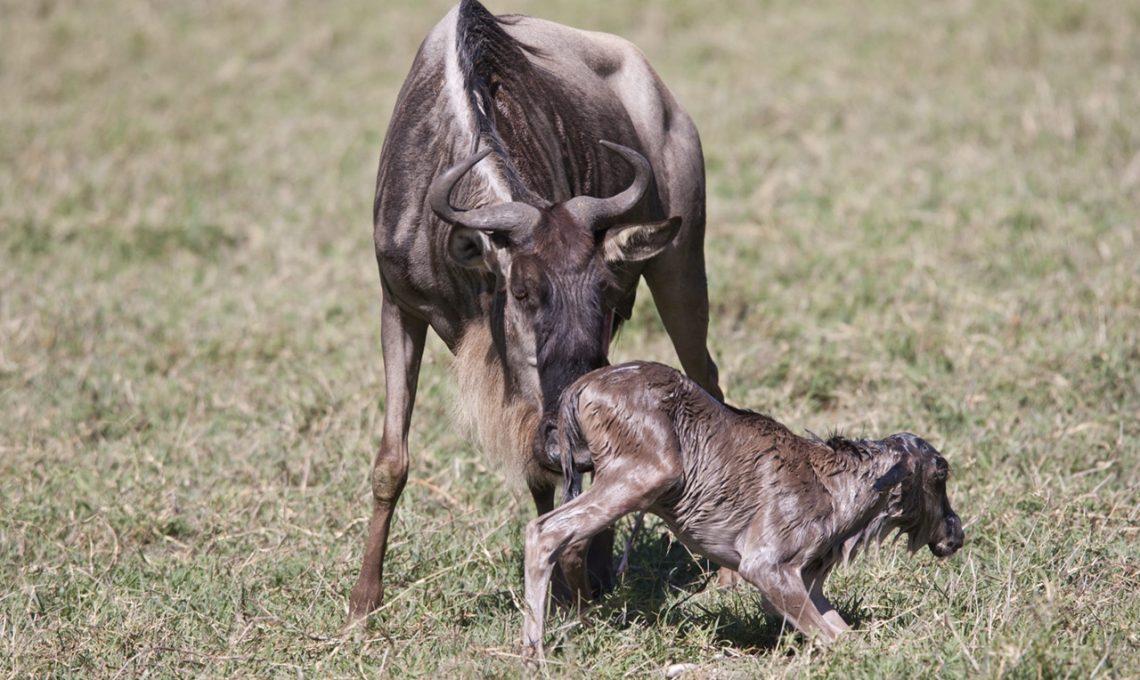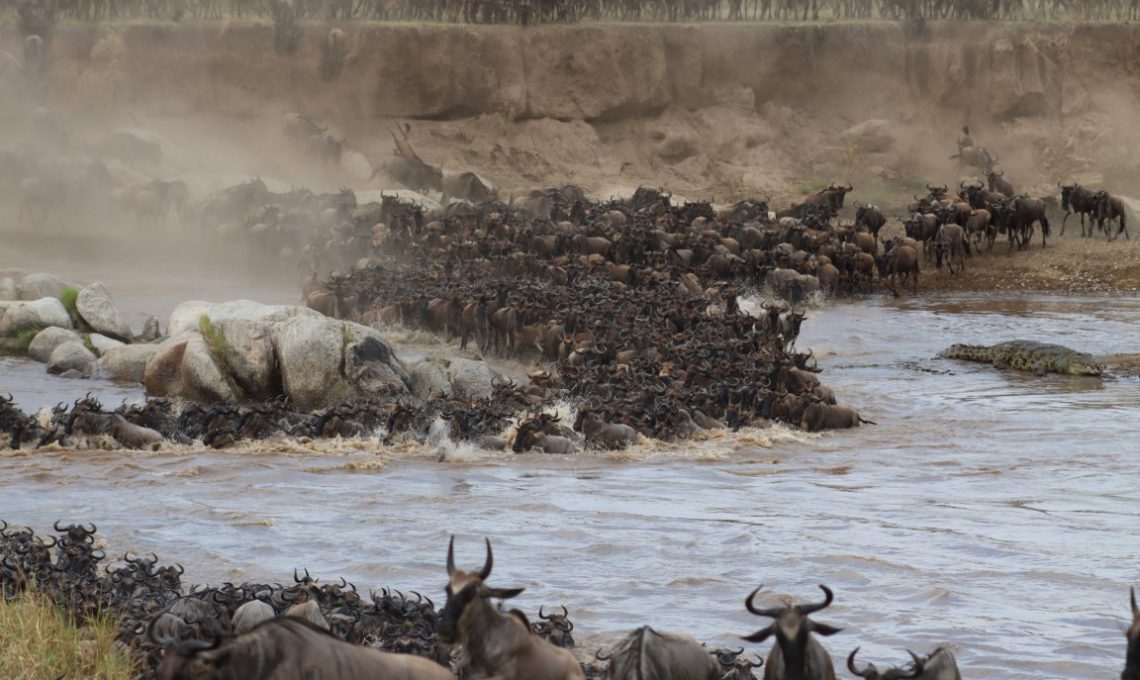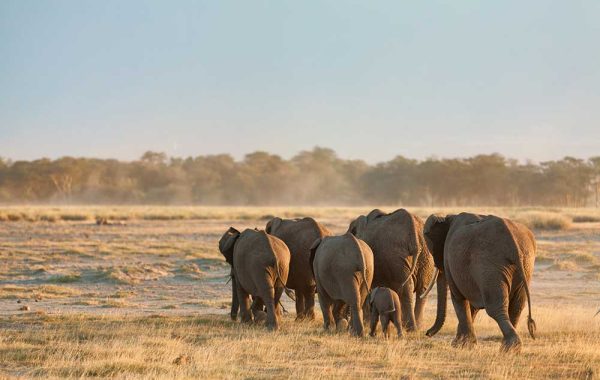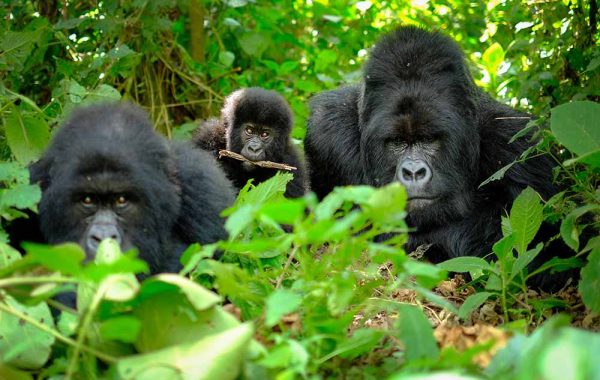The Serengeti’s great wildebeest migration is the largest and longest animal migrations in the world. An incredible wildlife spectacle, each year 1.5 to 2 million or more wildebeest, gazelles, zebra, eland, and impalas graze north across the Serengeti plains to the Masai Mara National Reserve in Kenya. Dramatic river crossings set the stage for intense wildlife drama when wildebeest must evade the crocodiles, big cats, and hyenas lying in wait to take down slow or weakened prey.
Choose Your Serengeti Safari Adventure
Nature in Spirit offers three Serengeti safaris. Come experience the wildebeest calving season or the spectacular migration of thousands of wildebeest. Or come any time for an incredible wildlife adventure!
8-Day Great Migration Mara River Serengeti Safari
Destinations: Arusha, Serengeti National Park, Ngorongoro Crater, Mto Wa Mbu, and Tarangire National Park
Witness the Great Migration in the Serengeti during the fall when millions of wildebeests and zebras brave the perilous Mara River crossing. Search for the Big Five in the breathtaking Ngorongoro Crater, discover the vibrant Mto Wa Mbu culture, and see the towering baobabs and massive elephant herds of Tarangire National Park.
8-Day Great Migration Calving Season Serengeti Safari
Destinations: Arusha, Serengeti National Park, Ndutu, Ngorongoro Crater, and Tarangire National Park
Experience the thrill of the Great Migration calving season in the Serengeti, where over 500,000 wildebeest are born within just a few weeks from January through March on the vast, green plains. This breathtaking event draws stealthy predators—lions, cheetahs, and hyenas—setting the stage for intense wildlife drama and unmatched photographic moments.
8-Day Highlights of Northern Tanzania Safari
Destinations: Arusha, Tarangire National Park, Mto Wa Mbu, Serengeti National Park, and Ngorongoro Crater
Come on a safari that offers the ultimate Tanzania experience. Start your trip with a warm welcome in Arusha. Chase the Big Five in iconic destinations like the Tarangire National Park, the Serengeti, and Ngorongoro Crater, including an exciting night game drive in Tarangire. Immerse yourself in Maasai culture and visit with local artisans to round out your unforgettable adventure.
What's the best time to visit the Serengeti?
Tanzania’s Serengeti National Park is incredible to visit any time. Two wildlife spectacles stand out, however.
January to March: Each year, up to 500,000 wildebeest calves are born on the plains of the Southern Serengeti and the Ngorongoro Conservation Area, near Ndutu.
August to October: The Serengeti migration in Northern Tanzania happens during the rainy season when millions of wildebeest and other animals search for green pasture and water.
The Serengeti Calving Season
The shorter grasses in the Southern Serengeti make it the perfect place for calving. The wide-open plains provide security since the herds can easily see the predators and protect their calves. In April and May, you can see resident cats try to prey on the calves as they expand their range, creating dramatic wildlife moments.
The Great Migration in Tanzania
Come August, the massive herd of wildebeest is now moving across the northern Serengeti to the Maasai Mara in search of fresh grazing. The migrating animal must cross the Mara River, offering the best chance to see dramatic predatory interactions with including lions, alligators, cheetahs, and leopards attacking the young and feeble of the migrating herds.
Why Choose a Nature in Spirit Safari?

Trusted, Reliable Vehicles
Our comfortable safari vehicles have 6 window seats. We inspect them before and after every trip and make sure they're fully equipped for roadside emergencies.

Your Health & Safety
We prioritize our guests' safety. Our guides are Wilderness First Responder (WFR) certified. We also partner with AMREF Flying Doctors to take care of you if any emergency happens.

24/7 Support
Nature in Spirit crew members are available around the clock. We go above and beyond to meet your expectations so you’ll have the experience of lifetime.
Other Popular East Africa Safaris
Check out these other Tanzania safari trips that our customers love. See all trips

